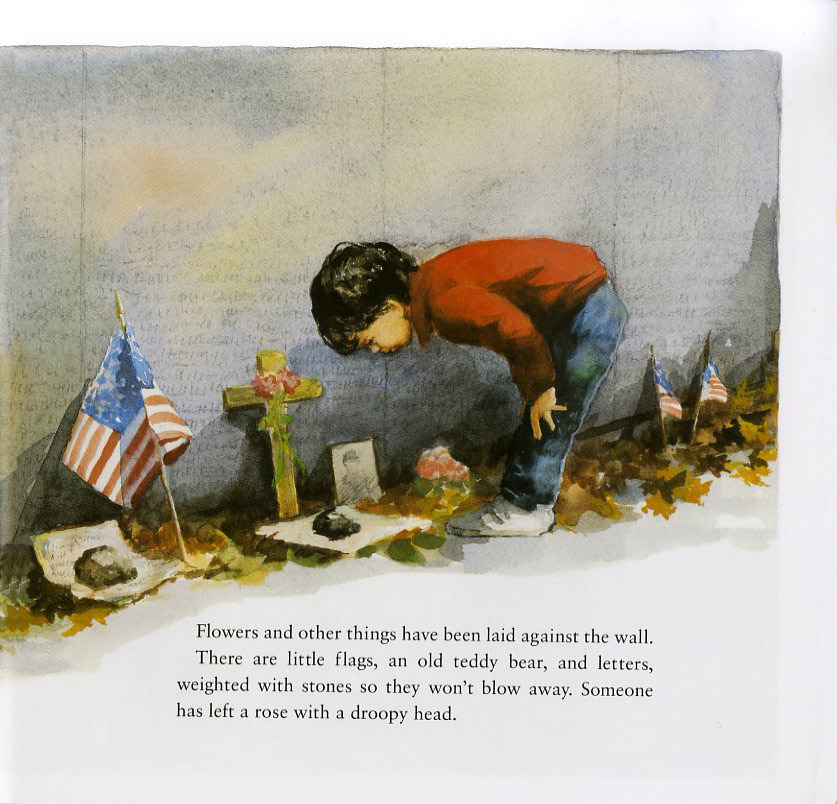
A FEW OTHER EVENTS FOR
JANUARY 30:
- Happy birthday Polly Horvath (Everything on a Waffle).
- It’s the birthdate of Michael Dorris (1945–1997), Morning Girl, A Yellow Raft in Blue Water.
- Franklin D. Roosevelt (1882–1945), the longest serving United States president was born on this day. Read A Boy Names FDR: How Franklin D. Roosevelt Grew Up to Change America by Kathleen Krull, illustrated by Steve Johnson and Lou Fancher, FCR’s Alphabet Soup: New Deal America 1932–1939 by Tonya Bolden, and Breakfast at the Liberty Diner by Daniel Kirk.
- In 1933, Adolf Hitler is sworn in as Chancellor of Germany. Read The Book Thief by Markus Zusak.
Today marks the anniversary of the Tet Offensive in 1968. After calling a cease-fire during the Tet holiday celebration, North Vietnam launched a major offensive throughout South Vietnam. A milestone in the Vietnam War, after the Tet Offensive the U.S. Government began to seek a way out of their involvement in the Vietnamese War.
Certainly the Vietnam War shaped my life and those who also experienced these events as a young person. But how might these years be made understandable to young children today? In 1990 Eve Bunting published The Wall, illustrated by Ronald Himler, which brings the war in Vietnam into perspective for young readers. Now a classic, The Wall begins “This is the wall, my grandfather’s Wall. On it are the names of those killed in a war, long ago.”
An unnamed boy and his dad hunt for the name of the boy’s grandfather on the Vietnam Veterans Memorial in Washington, D.C. Flowers, flags, teddy bears, and letters decorate the memorial. They see a man in a wheelchair, grandparents hugging, and a group of girls in school uniforms all visiting the wall. Finding the grandfather’s name, George Munoz, among those killed in 1967, the father makes an impression on paper to take back with them. Then they place a picture of the boy beneath the grandfather’s name. Proud to see his grandfather on the memorial, the boy admits he would rather “have my grandpa here, taking me to the river, telling me to button my jacket because it’s cold. I’d rather have him here.”
In this short but powerful text, the Vietnamese War becomes a family story—of a boy and the missing grandfather in his life. It brings home the high cost of the war in human terms and yet is still respectful, even reverential, to those who gave their lives. Ronald Himler’s soft pencil and watercolor drawings round out the presentation. The faces of those visiting the Vietnam Veterans Memorial are mere suggestions—they could serve as the faces of all Americans.
Some prefer to use Bunting’s The Wall for Memorial Day, Independence Day, or Veterans Day. But whenever you share the book with children, it can be used to start meaningful discussions with first through fifth graders.
Here’s a page from The Wall:
Originally posted January 30, 2012. Updated for .







This is a wonderful book. Eve Bunting has many books that are appropriate for older elementary school children. They are good for read-alouds to stand alone or match with class curricula. The Wall reminds me of my first moving visit to the Vietnam Memorial.
I, too, grew up during the war though, luckily, I was young enough that it ended before anyone I was close to or knew was old enough to be drafted. However, I remember seeing all the war footage on the nightly news and reading about it in the papers. I even had a POW bracelet (my POW was one of the ones who came home). Today’s entry made me remember the first time I saw the Vietnam Memorial in the early 90s. I was walking along The Mall looking for it when it literally grew up out of the ground next to me. Looking at all the names, watching family and friends finding a loved one’s name were experiences that are still fresh and come unbidden to my mind to this day. You see the escalation of the war, when our participation peaked, and the withdrawal of troops began and end. The young people who lost their lives are the focus. It was an incredibly moving moment and it is a beautifully effective memorial. Thank you for highlighting this book. I definitely will be checking it out of the library.
On a less somber note, Happy Birthday to Polly Horvath. I adore her books and the wicked sense of humor in them. I read The Caning Season for the first time in November and it was one of my favorite reads of 2012. I laughed out loud countless times, cried, and shook my head in amazement at some of the things in that story. I wonder if it would be published today in these hyper sensitive times. If not, it would be a shame. I read somewhere that this is one of her more divisive books. If so, put me firmly in the pro camp. It’s funny, yes, but also so much more than that. It’s a lovely meditation on found family, aging, and the gifts different generations can give to each other. All without being preach or maudlin. Plus, bears.
I agree with you. The text is very powerful, and it elicits some wonderful discussions from my fifth-grade library students.